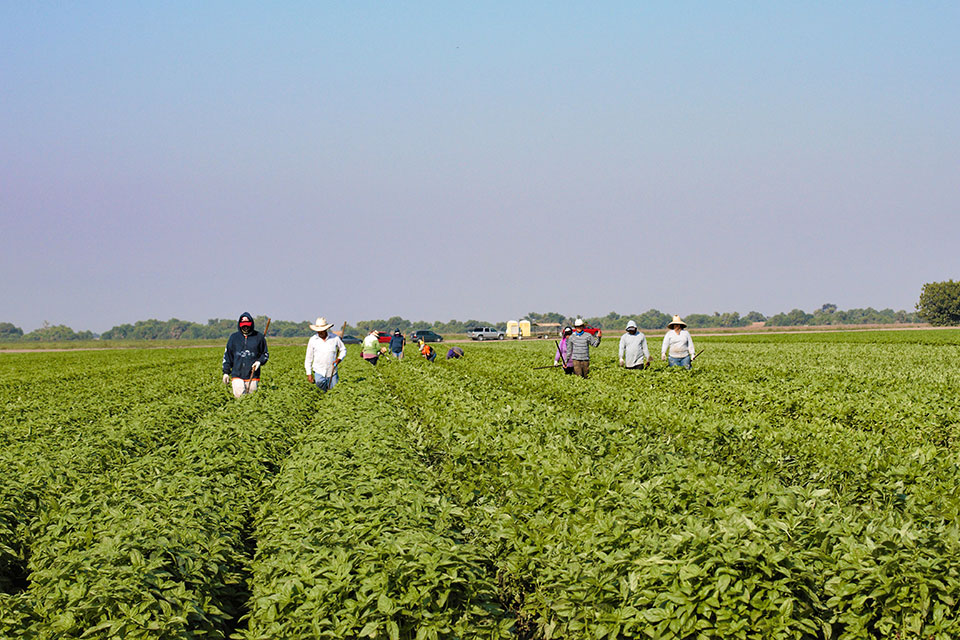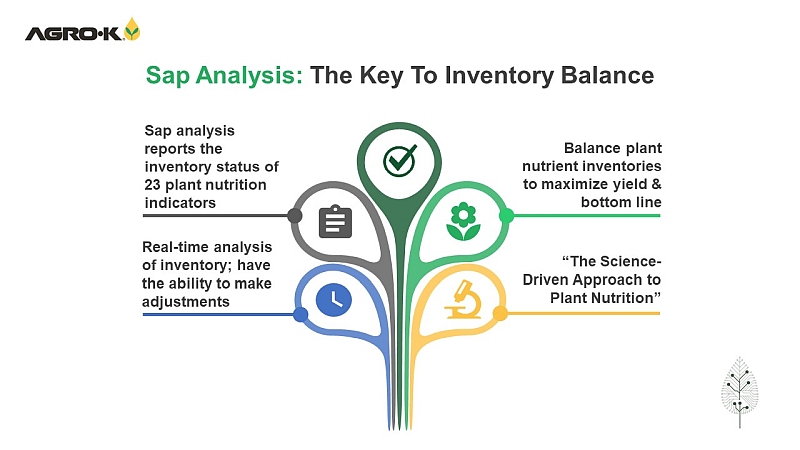4 Organic Vegetable Growers Share Their Pest Control Secrets

Hand weeding is labor intensive but necessary to keeping weeds in check.
Photo by Cayden Pricolo
Organic growers approach crop protection just a little differently than their conventional peers. It’s more of a dance with nature than a formulaic schedule of applications. Even growers who grow both organic and conventional crops tap into separate skills for their organic crops.
Los Banos, CA-based Bowles Farming Company is great example of this.
“I like to think of myself as the pest management advisor. My job is about how I manage pests and diseases to help me control them,” says Wayne Pricolo, Bowles Farming Company’s in-house pest control advisor.
At Bowles Farming, they have a little bit of everything growing under conventional and organic farming systems. Currently, they have about 500 acres of organic production, with an extra 250 acres of grain corn transitioning into organics. In total, Bowles Farming Company has 10,000 acres under its belt to manage. Interestingly, a lot of their success is due to taking into account sustainable practices echoed across the country.
“We incorporate a lot of means that don’t necessarily kill or eradicate a pest. Out here we do a lot of cultural practices that help us manage pests,” Pricolo states.
A couple of these cultural management strategies are propagating native species and planting cover crops in small, non-crop areas like river edges and corridors.
“We plant oats, or some other crop that will control weeds and help trap and keep insects there. We work hard to manage these native and non-crop areas as part of our pest management strategy,” Pricolo explains.
According to Pricolo, these cover crops in non-crop areas offer a twofold benefit for Bowles: they not only help contain pests such as weeds and insects but also give wildlife habitat a place to go and keep them out of their fields.
Provide a Natural Habitat
Pricolo says being strategic about crop and non-crop planting is key. There is not very much space between crops and non-crops. So it’s vital to take a proactive approach to keep pests away from crop areas.
“Certain crops will host an insect, but that insect won’t hurt that crop. But when that crop is harvested, those insects will migrate to a crop that they can damage,” Pricolo says.
One example he gives is lygus bug.
“Alfalfa can hold lygus insects and not hurt the alfalfa. But as soon as you harvest the alfalfa — and you harvest it every month — those lygus insects fly out of that alfalfa and into the cotton fields where they can be very damaging. So we try not to plant our alfalfa near our cotton. And when they are close, we leave a little bit of the alfalfa behind to give the insect a place to go. A little sanctuary for them to stay,” he says.
Being proactive is key in organic pest management. Growers need to provide an alternative habitat for predators to keep them at bay.
Greentree Naturals, a small family owned organic farm in Northern Idaho, implements a similar strategy.
“Being certified organic means you have to be proactive when dealing with pests,” says owner Diane Green. “We always rotate our crops and plant plenty of flowers and herbs throughout our gardens to create a good, healthy habitat for beneficial insects.”
The challenge is constant, Green says.
“There are always pests out there that want to chomp on our vegetables. So managing for natural enemies of aphids and other pests is the most proactive thing we can do.”
Diligence in Keeping It Clean
Keeping your crop area and its perimeters clean of weeds is a key factor in keeping pests and diseases from your crops. Although expensive, hand weeding is often a necessary expense to keep areas clean. Proactive weed control measures are also necessary to minimize weed control.
“Our irrigation ditches and drains can get weedy,” says Pricolo. “If we don’t keep our ditches clean, those weeds will eventually work their way into the fields. Cultural management is insect and disease prevention.”
Billy Augustine co-owns WJA Farms, a large, conventional and organic grower of tomatoes, cucumbers, and other various vegetables in substrate in high tunnels in North Carolina. He says the struggle is real when managing pests and weeds in high tunnel environments.
“The key to success is keeping it clean and weed free throughout and around the high tunnels to give the pests fewer places to harbor,” he says. “When things get out of control, we send workers in to weed by hand, which is very expensive but necessary to keep pests and insects away.”
Joshua Jurs, Principal Operations Specialist at Kreher Family Farms, a large family owned farm in Western New York with 5,000 acres of organic production, says the weed destruction happens during the “minimum weed-free period” of any vegetable crop — a third or half into the crop’s growth cycle.
“To eliminate these weeds by means of hand weeding, flaming, and cultivation ensures the competition and yield will not be affected. The later the weeds emerge, the less impact they will have,” Jurs says.
Jurs adds that for their farm, weed germination is critical. At Kreher, they try to get several rounds of weed germination “during different times of the year to reduce the seed bank of the range of seasonal weeds present.”
Use the Tool of Cover Crops
Back in Idaho, Greentree Naturals has been successful in suppressing broadleaf weeds by planting mustard as a cover crop.
“We’ve experimented planting mustard as a cover crop between the rows in the garlic and have found some benefit from that. Mustard is effective as a bio fumigant that suppresses broadleaf weeds. We also use a mower and weed whacker in between the rows to cut down any weeds that are going to seed. Our rule is: weed, mulch, repeat,” Green says.
Opportunities in Challenges
“Organic farming is not this mysterious practice it once was,” Pricolo asserts. “There are a lot more resources out there and people willing to share their knowledge with growers interested in organic production.”
In addition to state workshops and guidance through green product manufacturers, farms are also key promoters of knowledge.
For example, Greentree Naturals hosts educational workshops and field research in their Idaho farms, while Beauchemin Preservation Farms, a small farm in Southern Maine, offers farmer Q&A sessions by appointment.
Controlling pests and diseases is a challenge. But there is increasingly more information to help organic farmers get through their production cycles.
Like conventional farmers, organic operations also rely on the helping hand of science to attain disease. Such as resistant varieties for their farms to reduce costs associated with disease control.
Beauchemin, for one, has been successful choosing varieties that ripen before fruit flies start to damage crops in Southern Maine.
Organic farming offers growers an opportunity to try new cultural practices that are kinder to our soils.
Beauchemin has had moderate success using beneficial nematodes in their berries to reduce their population of Japanese beetles, while Greentree Naturals does weekly foliar feeds with worm tea from their worm bins and fish emulsion.
“My advice to growers thinking of transitioning into organic farming is not to be afraid of the challenge. The industry is growing; the people are out there to help you out. There are ways to control pests and diseases in organics; the resources are out there and continue to grow as time goes on — it is definitely not going away,” Pricolo says.










